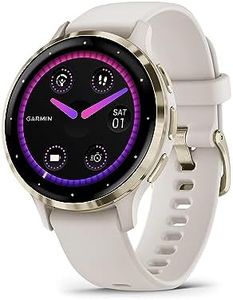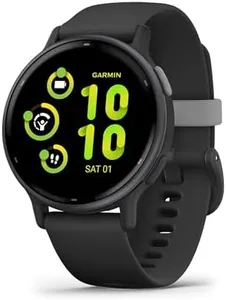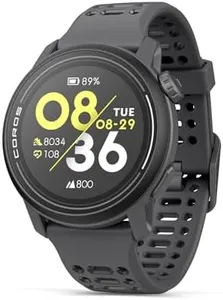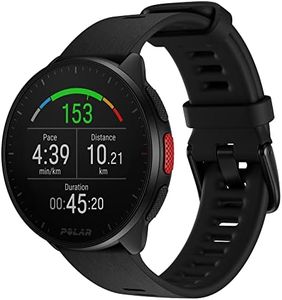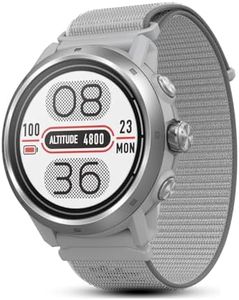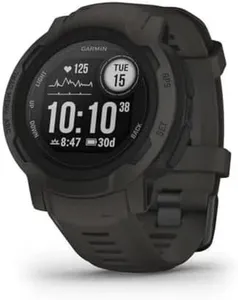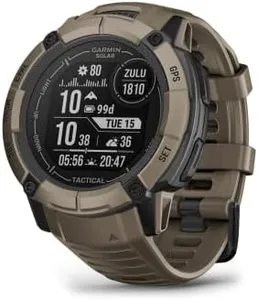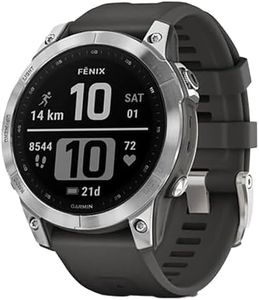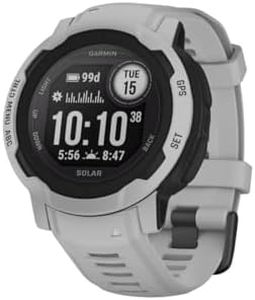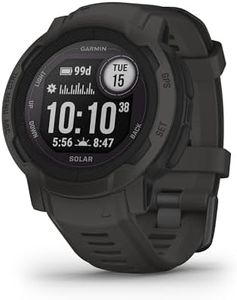We Use CookiesWe use cookies to enhance the security, performance,
functionality and for analytical and promotional activities. By continuing to browse this site you
are agreeing to our privacy policy
10 Best Hiking Watches
From leading brands and best sellers available on the web.Buying Guide for the Best Hiking Watches
Choosing the right hiking watch is all about finding a balance between the features you truly need and ease of use. A hiking watch can be a valuable companion on the trail, offering navigation support, environmental information, and health tracking. Before selecting a watch, think about the types of hikes you do—short treks, multi-day adventures, or high-altitude climbs. Consider the environments you frequent and what kind of data or support would make your hikes safer and more enjoyable. Focus on features that match your hiking habits to ensure you aren’t weighed down with unnecessary complexity.GPS AccuracyGPS capability lets your watch track your location and guide you on trails even in remote areas. The accuracy of the GPS can vary from basic connectivity, which is good for open areas, to multi-band, multi-system support, which locks onto satellites more quickly and can maintain a fix in dense forests or deep canyons. If you primarily hike in open spaces, basic GPS is usually sufficient. For those tackling dense woods or mountainous terrain, consider more advanced GPS accuracy to avoid getting lost.
Battery LifeBattery life determines how long the watch will last before needing a recharge and is crucial if you’re on multi-day hikes or far from electrical outlets. Battery life can range from a day to several weeks, depending on the watch’s features and GPS usage. Watches with advanced sensors and always-on GPS use more power. Short day hikes usually don’t demand much battery, while extended trips require a watch that can last for days or offers ultra battery-saving modes.
Durability and Water ResistanceDurability refers to how well the watch holds up to rough use, knocks, and scratches, while water resistance ensures the watch won’t fail in wet conditions. Most hiking watches offer at least splash resistance, but higher-rated models withstand heavy rain or full water immersion. If your hikes often involve tough terrains, storms, or river crossings, prioritize higher durability and water resistance ratings.
Altimeter, Barometer, and Compass (ABC Sensors)ABC sensors provide altitude, atmospheric pressure, and directional information. An altimeter tracks your elevation, a barometer predicts weather shifts, and a compass helps navigate when GPS fails. Simple watches may lack these, while advanced models offer accurate, real-time readings. If you hike in variable weather, off-trail, or at high altitudes, these sensors can make your journey safer and more informed.
Navigation FeaturesNavigation features vary from simple breadcrumb trails showing where you've been, to full topographic maps and route planning. Basic navigation suits straightforward trails, but if you wander off the beaten path, advanced features like turn-by-turn guidance or downloadable maps become essential. Match the sophistication of these tools to the complexity of your hikes.
Activity and Health TrackingThis includes heart rate monitoring, step counting, sleep tracking, and other health metrics. These can help monitor your fitness and alert you to changes in health during strenuous activities. Basic models may track steps and heart rate, while premium ones offer more detailed analytics. If you value fitness insights or have health concerns, pick a watch with built-in activity tracking.
Display ReadabilityDisplay readability is about how easily you can read the screen in bright sunlight, rain, or low light. Some watches use traditional LCD screens, while others have transflective or OLED displays. If you hike in sunny or varied conditions, opt for a screen designed for good outdoor readability, ensuring you can access information quickly.
